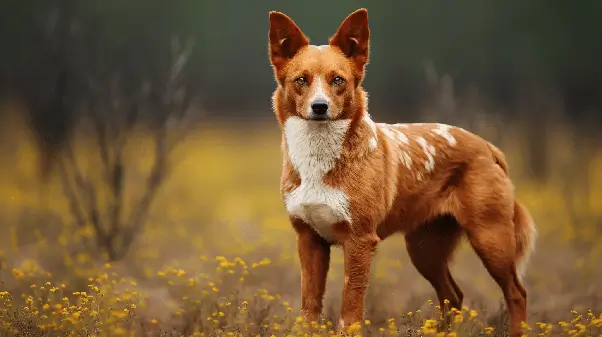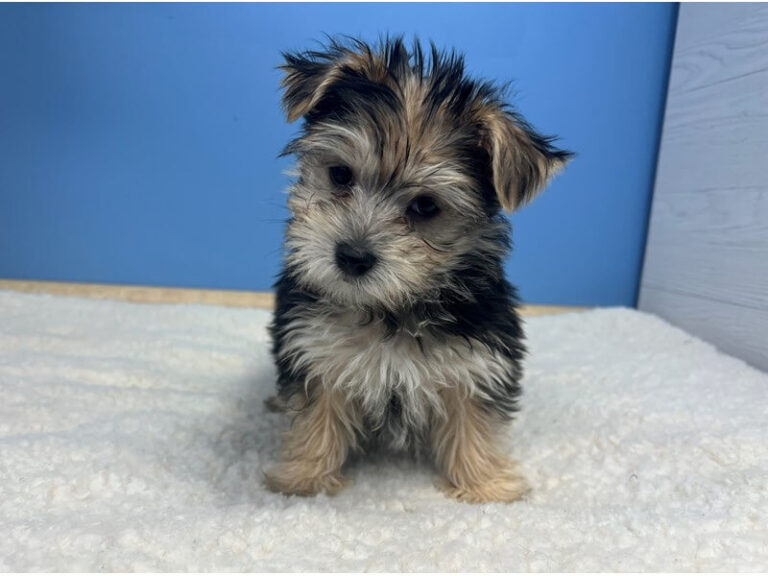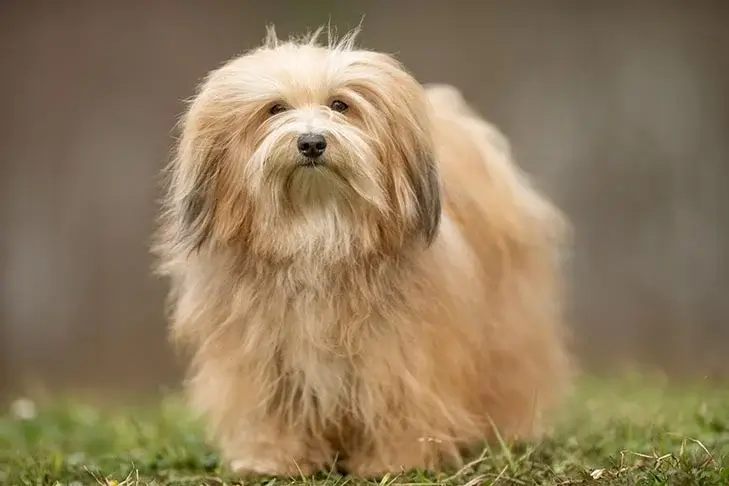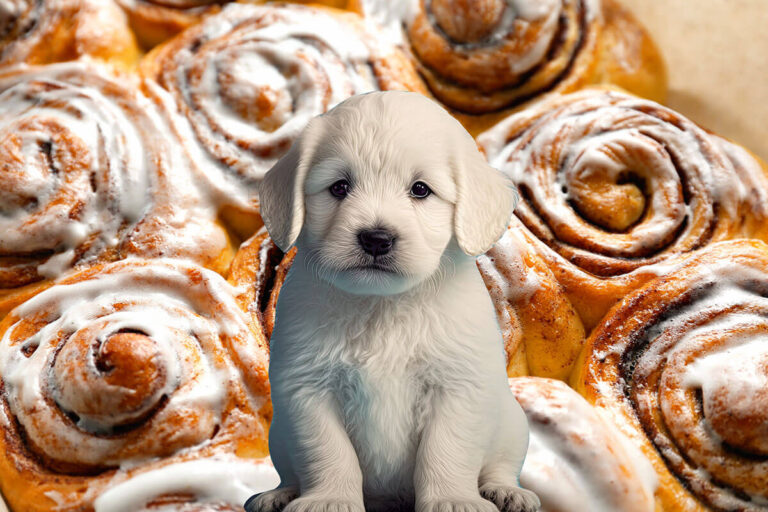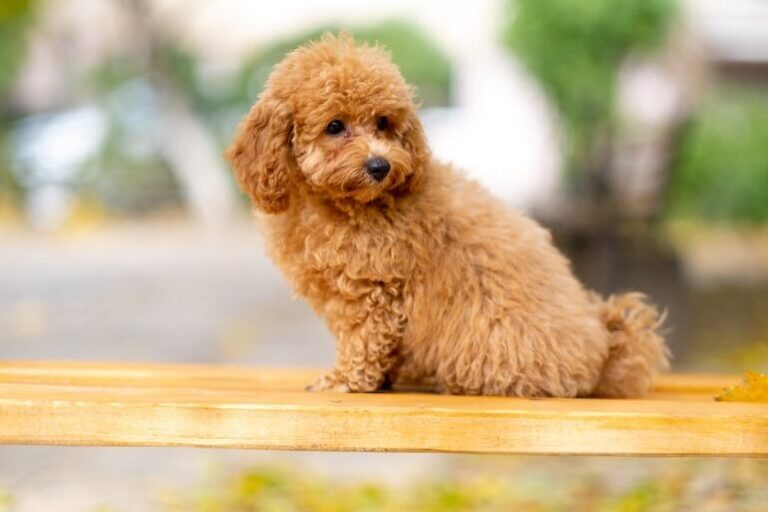Red Heeler Dog Breed Guide: Traits, Care, and Training Tips
The Red Heeler, also known as the Australian Cattle Dog, is a robust and hardworking breed renowned for its herding capabilities. This breed, with its distinctive red coat, has been a favorite among ranchers and farmers for its unmatched stamina and intelligence. But what is a Red Heeler, and what makes it unique? Let’s explore the fascinating details of this remarkable breed.
Contents
- 1 Physical Characteristics of Red Heelers
- 2 Red Heeler Temperament and Personality
- 3 Training and Exercise Needs for Red Heelers
- 4 Health and Lifespan of Red Heelers
- 5 Grooming and Maintenance of Red Heelers
- 6 Diet and Nutrition for Red Heelers
- 7 Living Conditions and Environment for Red Heelers
- 8 Red Heeler Puppies: What to Expect
- 9 Activities and Sports for Red Heelers
- 10 Adoption and Rescue for Red Heelers
- 11 Conclusion
Origin and History
Originating in Australia in the 19th century, the Red Heeler was developed by crossing the native Dingoes with imported herding breeds, including the Collie and Dalmatians. The goal was to create a resilient dog capable of managing cattle across vast and rugged terrains. Their lineage grants them not only a strong work ethic but also a loyal and protective nature.
Physical Characteristics of Red Heelers

Size and Weight
Red Heelers are medium-sized dogs, typically weighing between 35 to 50 pounds. They stand around 17 to 20 inches tall at the shoulder. Despite their compact size, these dogs are muscular and sturdy, built for endurance and agility.
Coat and Colors
As the name suggests, Red Heelers have a distinctive red or reddish-brown coat. Their fur is short, dense, and weather-resistant, providing excellent protection against harsh outdoor conditions. Some may have speckled or mottled patterns, adding to their unique appearance.
Distinctive Features
Red Heelers dogs are known for their alert and keen expressions. They have erect ears and dark, intelligent eyes that reflect their attentive nature. Their strong, agile bodies are designed for stamina and speed, making them perfect for herding tasks.
Red Heeler Temperament and Personality
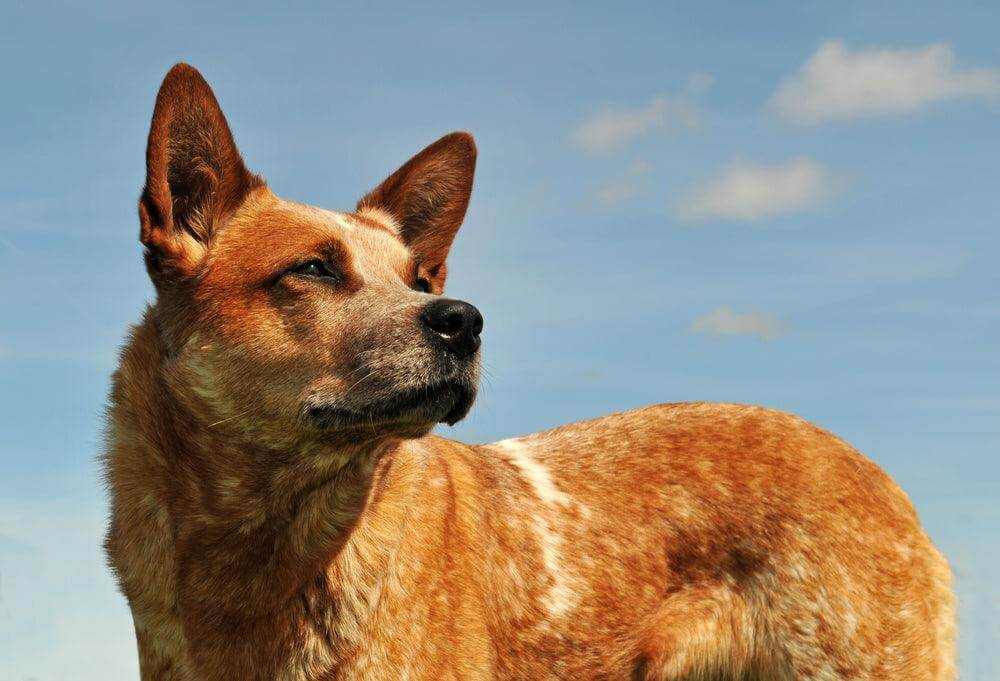
General Behavior
Red Heelers are known for their energetic and active demeanor. They are highly intelligent and have a strong instinct to work, often displaying a natural herding behavior. This breed is loyal and protective, making them excellent watchdogs.
Intelligence and Trainability
One of the most intelligent dog breeds, Red Heelers are quick learners and highly trainable. They thrive on mental stimulation and enjoy challenges that engage their problem-solving abilities. Consistent training and positive reinforcement methods work best for this breed.
Interaction with Families and Other Pets
Red Heelers can be great family pets, especially for active families who can meet their exercise needs. They are affectionate and loyal to their family members but may be wary of strangers. Early socialization is crucial to ensure they get along well with other pets and children.
Training and Exercise Needs for Red Heelers
Training Tips and Techniques
Given their intelligence, Red Heelers respond well to structured training routines. Use positive reinforcement techniques, such as treats and praise, to encourage desired behaviors. Consistency and patience are key, as these dogs can sometimes be stubborn.
Exercise Requirements
Red Heelers require substantial exercise to keep them happy and healthy. Daily activities should include long walks, runs, and play sessions. They excel in dog sports like agility, obedience, and herding trials, which provide both physical and mental stimulation.
Mental Stimulation Activities
To prevent boredom, which can lead to destructive behavior, engage your Red Heeler in activities that challenge their mind. Puzzle toys, advanced training exercises, and interactive play can help keep their sharp minds occupied.
Health and Lifespan of Red Heelers
Common Health Issues
Red Heelers are generally healthy, but they can be prone to certain genetic conditions. These include hip dysplasia, progressive retinal atrophy, and deafness. Regular vet check-ups and health screenings are essential to catch and manage any issues early.
Preventive Care and Regular Check-ups
Maintaining a schedule of regular veterinary visits is crucial for monitoring your Red Heeler’s health. Vaccinations, dental care, and parasite control should be part of their routine preventive care.
Life Expectancy
With proper care, Red Heelers typically live between 12 to 16 years. Their longevity can be attributed to their robust genetics and active lifestyle.
Grooming and Maintenance of Red Heelers
Grooming Routine
Red Heelers have a low-maintenance coat, but regular grooming helps keep their fur healthy. Brush their coat weekly to remove loose hair and prevent matting. During shedding season, more frequent brushing may be necessary.
Shedding and Coat Care
Red Heelers shed moderately year-round and heavily during seasonal changes. Using a de-shedding tool can help manage excess hair and keep your home cleaner. Regular baths are only necessary if they get particularly dirty.
Dental, Nail, and Ear Care
Dental hygiene is important for Red Heelers; brush their teeth several times a week to prevent dental disease. Trim their nails regularly to avoid overgrowth, and check their ears weekly for signs of infection or debris.
Diet and Nutrition for Red Heelers
Recommended Diet
Feed your Red Heeler a high-quality, balanced diet that meets their nutritional needs. Look for dog food with a good mix of proteins, fats, and carbohydrates, and avoid fillers and artificial additives.
Feeding Schedule and Portions
Divide their daily food intake into two meals to maintain their energy levels throughout the day. The portion size should be based on their age, weight, and activity level. Consult your vet for personalized feeding recommendations.
Foods to Avoid
Avoid feeding your Red Heeler foods that are toxic to dogs, such as chocolate, grapes, onions, and certain nuts. Additionally, table scraps and high-fat foods can lead to obesity and other health issues.
Living Conditions and Environment for Red Heelers
Suitable Living Arrangements
Red Heelers thrive in environments where they have plenty of space to run and play. They are well-suited to homes with large yards or farms. However, they can adapt to apartment living if they receive ample exercise.
Indoor vs. Outdoor Living
While Red Heelers enjoy spending time outdoors, they should not be left outside for long periods without shelter. They form strong bonds with their families and prefer being indoors with their loved ones.
Adapting to Different Climates
Red Heelers can adapt to various climates thanks to their weather-resistant coat. However, in extreme temperatures, they need appropriate shelter and care to stay comfortable.
Red Heeler Puppies: What to Expect
Choosing a Red Heeler Puppy
When selecting a Red Heeler puppy, look for a reputable breeder who tests their breeding dogs for common health issues. Observe the puppies’ behavior and choose one that is active, curious, and well-socialized.
Puppy Care Tips
Caring for a Red Heeler puppy involves proper training, socialization, and veterinary care. Establish a routine for feeding, potty training, and playtime to help your puppy adjust to their new home.
Socialization and Early Training
Early socialization is crucial for Red Heeler puppies. Expose them to different people, pets, and environments to build their confidence and prevent behavioral issues. Basic obedience training should start as soon as possible.
Activities and Sports for Red Heelers
Dog Sports and Competitions
Red Heelers excel in various dog sports and competitions. Activities such as agility, obedience, and Herding trials provide excellent outlets for their energy and intelligence. These sports also strengthen the bond between the dog and its owner.
Outdoor Activities and Adventures
This breed loves outdoor adventures, including hiking, running, and swimming. Red Heelers enjoy exploring new environments and can be great companions for active individuals or families.
Training for Specific Roles (e.g., Herding)
Given their herding heritage, many Red Heelers excel in herding livestock. Training them for specific herding roles can be incredibly fulfilling for the dog and useful for farm owners. They can also be trained as search and rescue dogs due to their keen senses and determination.
Adoption and Rescue for Red Heelers
Finding Reputable Breeders
To find a reputable Red Heeler breeder, look for one who prioritizes health, temperament, and breed standards. A good breeder will provide health clearances and allow you to meet the puppy’s parents.
Red Heeler Rescue Organizations
Several rescue organizations specialize in Red Heelers and Australian Cattle Dogs. Adopting from a rescue can be a rewarding experience and provides a home for a dog in need.
Adoption Process and Considerations
The adoption process typically involves an application, home visit, and adoption fee. Consider your lifestyle, activity level, and experience with herding breeds before adopting a Red Heeler.
Frequently Asked Questions
Q: What is a Red Heeler dog?
A: A Red Heeler, also known as an Australian Cattle Dog, is a herding breed known for its intelligence, stamina, and distinctive red coat.
Q: What is the temperament of a Red Heeler dog?
A: Red Heelers are energetic, intelligent, and loyal. They are protective of their families and require regular mental and physical stimulation.
Myths and Facts about Red Heelers
Myth: Red Heelers are aggressive.
Fact: While they can be protective, well-trained, and socialized, Red Heelers are friendly and well-behaved.
Myth: Red Heelers can’t live in apartments.
Fact: With sufficient exercise and mental stimulation, Red Heelers can adapt to apartment living.
Expert Advice and Tips
Tip: Start training and socialization early to ensure a well-adjusted adult dog.
Tip: Provide plenty of physical and mental exercise to prevent boredom and destructive behavior.
Conclusion
The Red Heeler dog breed is an exceptional choice for active individuals or families who can meet their exercise and mental stimulation needs. They are loyal, intelligent, and versatile dogs with a rich history and unique physical characteristics.
- Golden Retriever Pros and Cons: What Every Pet Parent Should Know - 15 September 2025
- Cane Corso Dog Breed: Health, Care, and Lifespan - 14 September 2025
- Catahoula Leopard Dogs: Description, Temperament, Lifespan, & Facts - 21 July 2025

